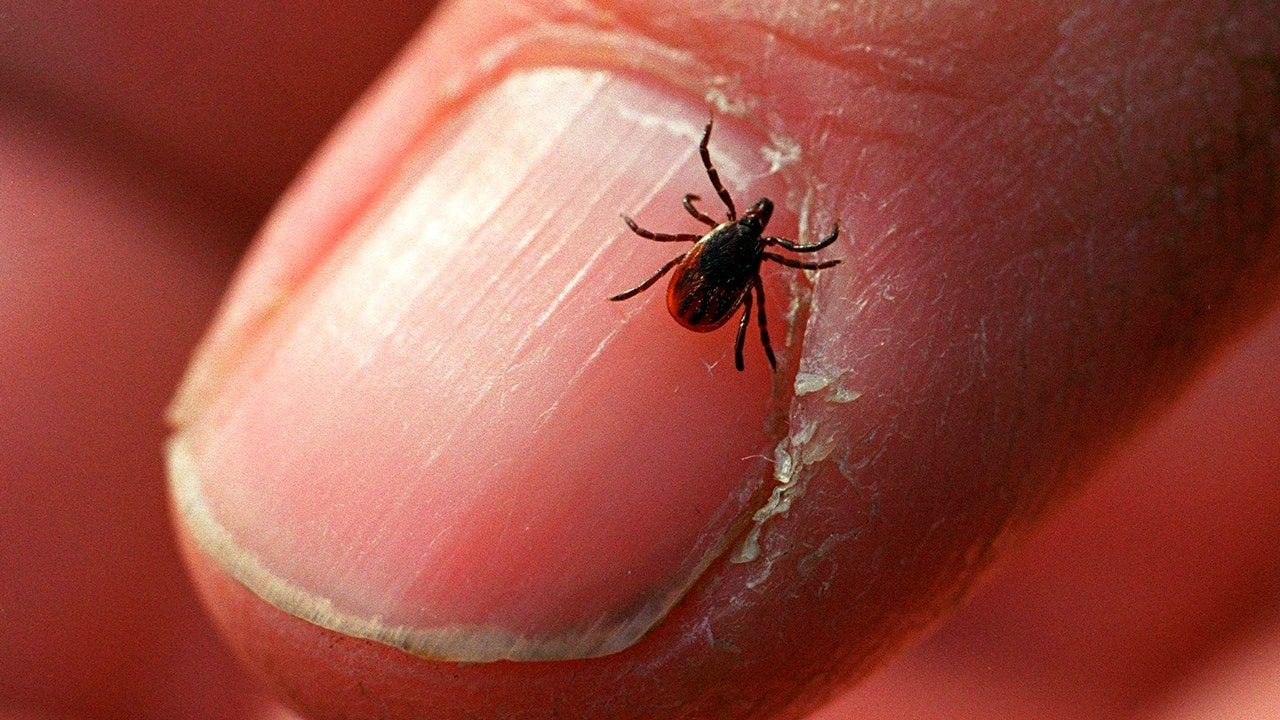Health
Ketamine Shows Promise for Hard-to-Treat Depression in New Study

A new study suggests that, for some patients, the anesthetic ketamine is a promising alternative to electroconvulsive therapy, or ECT, currently one of the quickest and most effective therapies for patients with difficult-to-treat depression. The study is the largest head-to-head comparison of the two treatments.
Patients who don’t respond to at least two antidepressants — about one-third of clinically depressed patients — have a condition that clinicians refer to as “treatment-resistant.” Their options for relief are limited. Doctors typically recommend up to 12 sessions of ECT, which has a long-established efficacy, but is tainted by the stigma of historical misuse and frightening Hollywood images of people strapped to tables, writhing in agony. Today’s ECT is much safer and done under general anesthesia, but the procedure remains underutilized.
The study, published on Wednesday in The New England Journal of Medicine, found that ketamine, when administered intravenously, was at least as effective as ECT in patients with treatment-resistant depression who do not have psychosis. (For people with psychosis, ketamine, even in very low doses, can worsen psychosis-like symptoms.)
“The results were very surprising to us,” said Dr. Amit Anand, lead author of the study and a professor of psychiatry at Harvard Medical School who studies mood disorders at Mass General Brigham. His team had initially hypothesized that ketamine would be nearly as effective as ECT. Instead, Dr. Anand said, they found that ketamine performed even better than that.
This is significant in part because some patients are uncomfortable with ECT’s potential side effects, such as temporary memory loss, muscle pain or weakness. (In rare cases it can result in permanent gaps in memory.)
The study, which was sponsored by the Cleveland Clinic Foundation, shows that ketamine is easier to administer, with fewer adjustments during treatment and fewer patients dropping out, Dr. Anand said. “More importantly, it shows that ECT, as expected, is associated with memory problems, while ketamine is not.” Intravenous ketamine also has side effects, like dissociation, but this is “not usually an unpleasant experience for patients,” Dr. Anand said.
Earlier studies have shown that both treatments can be effective in patients with hard-to-treat depression, but that research has primarily looked at the two therapies independently. Dr. Roger S. McIntyre, a professor of psychiatry and pharmacology at the University of Toronto who is not affiliated with the study, called it “groundbreaking.”
“It’s this type of rigorous, randomized, real-world pragmatic data that is robust and very clinically meaningful,” Dr. McIntyre said.
The researchers randomly assigned intravenous ketamine or ECT to 365 patients. Nearly half received ketamine twice a week while the others received ECT three times a week. By the end of the three-week treatment, 55 percent of those in the ketamine group and 41 percent of the patients in the ECT group reported a 50 percent or greater reduction in symptoms.
Six months later, the quality-of-life scores for both groups were similar.
One limitation of the study was that the number of ECT treatments may not have been sufficient because the treatment period was only three weeks, said Dr. Daniel F. Maixner, the ECT program director at Michigan Medicine at the University of Michigan, who was not affiliated with the study.
The study subjects started their course of ECT by receiving electric currents on one side of the brain, which may require 10 or 12 sessions, as opposed to the nine used in the study, he added.
“If there’s more improvement to be had, you continue,” Dr. Maixner said.
Patients who start out bilaterally, stimulating both sides at the same time, often need fewer sessions. If the patients had completed more ECT sessions, then a greater proportion of them may have responded to the treatment, Dr. Anand said, but that also would have likely caused more side effects.
A small number of patients in both groups — under 33 percent — went into remission, meaning they had only mild depressive symptoms. This suggests that additional treatments would be needed in order for the patients to maintain any relief.
Continued treatment, however, comes with additional risks. With ketamine, for example, longer treatment “increases the likelihood of both drug dependence and cognitive adverse effects, including dissociation, paranoia and other psychotic symptoms,” Dr. Robert Freedman, a professor of psychiatry at the University of Colorado, wrote in an editorial published with the study.
Previous evidence suggests that ECT remission rates can be much higher — often at least 60 percent — but these studies may have included a higher percentage of inpatients as well as patients with psychotic depression, for which ECT appears to be particularly effective.
Researchers and clinicians are using intravenous ketamine off label because it has not been approved by the Food and Drug Administration for treatment of mood disorders, unlike its cousin esketamine, also known as Spravato, which is administered nasally. Among clinicians, intravenous ketamine is widely considered to be as effective or more so than esketamine for treatment-resistant depression, Dr. Anand said.
Unfortunately, because intravenous ketamine is a generic medicine, “it is unlikely that anyone is going to try to get F.D.A. approval for it to make it more reimbursable for insurers,” he added.
Later this year, Dr. Anand and his colleagues will recruit patients for a larger study comparing ECT to intravenous ketamine in 1,500 acutely suicidal and depressed patients, most of whom are likely to be inpatients. They will also look at how the effects differ by age groups, Dr. Anand said.
Dr. Maixner, at Michigan Medicine, said that research suggests that intravenous ketamine, which he has also used to treat patients, may have some emerging and strong benefits for hard-to-treat depression, which “gives people options.”

Health
fatty15 has the essential nutrient to ease stress and well-being

Sign Up
Create a free account to access exclusive content, play games, solve puzzles, test your pop-culture knowledge and receive special offers.
Already have an account? Login
Forgot your password?
Get back to the Sign In
Use left and right arrow keys to navigate between menu items.
Use escape to exit the menu.
Health
Summer is tick season, but these tips can help you avoid the bloodsucking bugs

Tick season is starting across the U.S., and experts are warning the bloodsuckers may be as plentiful as ever.
Another mild winter and other favorable factors likely means the 2024 tick population will be equal to last year or larger, some researchers say.
“It’s very bad and has only been getting worse,” said Susanna Visser of the Centers for Disease Control and Prevention.
TICK BITES AND LYME DISEASE: WHAT TO DO IF A TICK BITES YOU OR YOUR PET
An increasing variety of ticks are pushing into new geographical areas, bringing unusual diseases. Exotic southern species like the Gulf Coast tick and the lone star tick are being detected in New York and other northern states, for example.
But the tick that experts warn of the most is a common blacklegged tick, which is found mainly in forests and spreads Lyme disease. Infection rates begin to peak in May, and U.S. health officials estimate nearly half a million Lyme disease infections happen annually.
Here’s a look at what’s expected this year and how you can protect yourself.
An adult deer tick, also known as the blacklegged tick, crawls on a fingernail at Connetquot State Park in Oakdale, New York on Dec. 27, 2011. (Bill Davis/Newsday RM via Getty Images)
TICK FACTS
Ticks are small, eight-legged bloodsucking parasites — arachnids, not insects — that feed on animals and sometimes people. Some ticks are infected with germs that can cause illness, and they spread those germs when they bite.
There is no widely accepted estimate of how many ticks there are from one year to the next, but there is a scientific consensus that they are an increasingly common health hazard in large portions of the United States.
Blacklegged ticks — also known as deer ticks, since they feed on deer — are among the most common ticks in the eastern half of the U.S. They were plentiful centuries ago, then diminished when forests were cut down and deer were hunted, and rebounded alongside deer and wooded suburbs. The ticks have spread out from pockets in New England and the Midwest over a wider range.
Tick populations cycle throughout the year and their numbers depend on a few factors. They like warm, humid weather, and more can be seen after a mild winter. The more deer and mice available to feed matters, too.
Overall, the blacklegged tick population has been expanding for at least four decades, researchers say.
“This is an epidemic in slow motion,” said Rebecca Eisen, a CDC research biologist and tick expert.
2024 TICK SEASON FORECAST
Weather can play a role in the severity of a tick season.
Very cold, dry winters can whittle down tick populations, but recent winters have been mild — a trend some attribute to climate change.
As Scott Williams, a tick researcher at the Connecticut Agricultural Experiment Station, said: “Winters are no longer limiting the tick population.”
Ticks can withstand the heat but tend to almost hibernate when it’s a dry summer. That happened in Maine in 2020 through 2022, said Chuck Lubelczyk, a vector ecologist at the MaineHealth Institute for Research.
But last year was a very wet year, and tick activity multiplied in Maine — the state with the highest incidence of Lyme disease in the country. Weather service predictions call for higher temperatures and precipitation, so “on paper, at least, it could be a very good year for the ticks,” Lubelczyk said.
In Wisconsin, adult ticks were out longer than usual due to a mild winter. The tick nymphs are starting to emerge, and a wet spring is setting the stage for the possibility that the population will be robust, said Xia Lee, an entomologist at the Wisconsin Department of Health Services.
Ditto New York.
“It will be as bad as last year, or worse,” said Saravanan Thangamani, who studies ticks and tickborne diseases at SUNY Upstate Medical University in Syracuse.
WHAT IS LYME DISEASE?
Not all ticks are infected with disease-causing germs — about 20% to 30% of the blacklegged tick nymphs that emerge in the Northeast and Midwest this spring and into summer will be carrying the bacteria that causes Lyme disease, experts estimate.
Lyme disease symptoms tend to start between three and 30 days after a bite occurs and can include fever, headache, fatigue and a bull’s-eye-like rash. If you get bitten and develop symptoms, see a doctor to get treated with antibiotics.
HOW TO KEEP TICKS OFF OF YOU
Experts say the best thing to do is take steps to avoid a tick bite in the first place.
If you go outdoors, make note of wooded areas and where grassy properties start bleeding into wooded areas. Ticks tend to perch on ankle-level vegetation with their upper legs outstretched, waiting to latch on to an unsuspecting dog or human.
Try to walk in the middle of paths, wear light-colored and permethrin-treated clothing and use Environmental Protection Agency (EPA)-registered insect repellents.
HOW TO CHECK FOR TICKS
When you come inside, check for ticks. They can be found anywhere on the human body, but common spots include around the waist, behind the knees, between fingers and toes, on underarms, in the belly button and around the neck or hairline.
They are harder to see when they are young, so look carefully and immediately pull them off with tweezers.
The CDC does not recommend sending individual ticks to testing services for analysis, because a person might get more than one tick bite and the results from the tested tick may not be sufficient information.
Health
Pizza for Weight Loss? Top MD Says This Dough Makes It Possible

Sign Up
Create a free account to access exclusive content, play games, solve puzzles, test your pop-culture knowledge and receive special offers.
Already have an account? Login
Forgot your password?
Get back to the Sign In
Use left and right arrow keys to navigate between menu items.
Use escape to exit the menu.
-

 World1 week ago
World1 week agoPentagon chief confirms US pause on weapons shipment to Israel
-

 Politics1 week ago
Politics1 week agoRFK Jr said a worm ate part of his brain and died in his head
-

 Politics1 week ago
Politics1 week agoCalifornia Gov Gavin Newsom roasted over video promoting state's ‘record’ tourism: ‘Smoke and mirrors’
-

 Politics1 week ago
Politics1 week agoOhio AG defends letter warning 'woke' masked anti-Israel protesters they face prison time: 'We have a society'
-

 News1 week ago
News1 week agoNine Things We Learned From TikTok’s Lawsuit Against The US Government
-

 Politics1 week ago
Politics1 week agoBiden’s decision to pull Israel weapons shipment kept quiet until after Holocaust remembrance address: report
-

 Education1 week ago
Education1 week agoVideo: Police Use Pepper Spray on Protesters on G.W.U.’s Campus
-

 World1 week ago
World1 week agoA look at Chinese investment within Hungary















